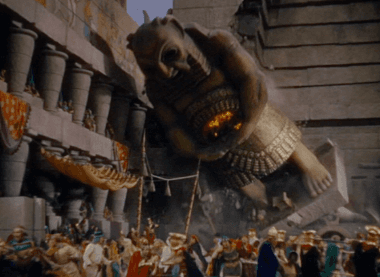David Jones, artist and poet (1895-1974) begins his PREFACE TO THE ANATHEMATA :
'I have made a heap of all that I could find.' (1) So wrote Nennius, or whoever composed the introductory matter to Historia Brittonum. He speaks of an 'inward wound' which was caused by the fear that certain things dear to him 'should be like smoke dissipated'. Further, he says, 'not trusting my own learning, which is none at all, but partly from writings and monuments of the ancient inhabitants of Britain, partly from the annals of the Romans and the chronicles of the sacred fathers, Isidore, Hieronymous, Prosper, Eusebius and from the histories of the Scots and Saxons although our enemies . . . I have lispingly put together this . . . about past transactions, that [this material] might not be trodden under foot'. (2)
(1) The actual words are coacervavi omne quod inveni, and occur in Prologue 2 to the Historia.
(2) Quoted from the translation of Prologue 1. See The Works of Gildas and Nennius, J.A.Giles, London 1841.
KAWS engages with universal feelings of isolation and loneliness through his works, in reaction to the turbulent world we live in today. His larger-than-life sculptures are playful, toy-like figures, however at closer look, they reveal a fragility and darkness in the vulnerable poses of the characters. The exhibition will include a newly commissioned 7-metre bronze COMPANION sculpture GONE, 2019, standing solemnly in a Pietà pose, evoking a sense of sorrow and empathy. On display in the NGV’s Federation Court, this monumental work will be the largest bronze KAWS has created to date.
KAWS, GONE, 2019 collection NGV
In an art calendar decimated by the pandemic, and in a year in which we have all suffered such sensory deprivation, the global unveiling of the first in what he’s calling his Porcelain series has become even more of a red-letter event. Fittingly perhaps, given our social estrangement and affection deficit disorder, his muse is Venus, the Roman goddess of love. Inspired by 18th-century porcelain figurines, the sculpture is a synthesis of classical ideas of beauty and cutting-edge production techniques. As with so much of his work, it uses mirrors and reflections – a device intended to make his art more accessible by turning the viewer into a participant in the piece. “The surface people are looking at is the right here, right now,” he says of the super-sized statuette. “The image itself is a historical viewpoint.”
Given the artist’s celebrity, and the undisclosed [$25 million!]
price tag attached to the work, Venus may be the most consequential American acquisition to arrive in Australia since Jackson Pollock’s Blue Poles in the early 1970s. The key difference – and one that offers a protective shield from tabloid outrage and political philistinism – is that no public money is involved. Instead, a small group of NGV benefactors, including members of the Smorgon, Clifford and Fox families, has financed the entire project.
Nick Bryant, The Age/Good Weekend, 5 Dec 2020

Theatre of the Actors of Regard
detail
A Person Looks At A Work Of Art/
someone looks at something...
LOGOS/HA HA
See French sculptor Jean Ipoustéguy's controversial sculpture installation titled ‘Death of the father’ today at NGV. https://twitter.com/NGVMelbourne/status/887401675580997637/photo/1
Jean Ipousteguy, Death of theFather, 1967-68, collection NGV
We are young enough to remember when in 1972 NGV director Eric Westbrook announced the expensive acquisition of Jean
Ipoustéguy’s Death of the Father. It was installed theatrically spotlit in a black-walled chamber of it's own at one end of the main exhibition hall. Patrick McCaughy, critic for The Age, railed against the work and it's purchase. We joined the Melbourne masses who came to see what the fuss was about.
We recalled that controversial acquisition while thinking about the comparable NGV acquisitions of 2019 and 2020 by KAWS and Koons.
This invaluable research paper by Melbourne University's Christopher R. Marshall provides an overview filled with interesting detail.
Read it or download the pdf here. A glimpse :
The eventual 1968 relocation of the NGV down
St Kilda Rd nonetheless brought a major shift in
emphasis. Even prior to this, though, the change
in agenda towards an assertively modernist
approach to collections development and
institutional identity was signaled by the
appointment in 1956 of Eric Westbrook to the
Directorship of the NGV. As a committed
modernist with a strong background in
international touring exhibitions, Westbrook
wasted no time in making his new agenda felt.
One of the key statements of this new focus came
in the 1960 purchase of Henry Moore’s Draped
Seated Woman, a landmark acquisition that was
met with a barrage of press, both positive and
negative. I have discussed elsewhere the
importance of this acquisition “as an emblem of
the National Gallery of Victoria's modernity” as
based particularly on the NGV’s desire to use the
acquisition as the centre piece to a new emphasis on collecting contemporary sculpture.20 It
certainly represents the archetypal instance of what
I shall here identify as the second stage in the
NGV’s engagement with monumental sculpture.
…the purchase marks a very important
change in the policy of both the Felton
Bequest and my own Trustees and we
hope that it will lead to the building of a
very fine collection of recent sculpture.
Everything in Australia points to it being
a country where sculpture should be
presented, not only from the character of
the people, but also from our superb light
which is as close to that of Greece that I
have yet found.
The dream of creating in Melbourne a new
Acropolis-like ensemble of monumental
international contemporary sculpture proved
challenging, as it transpired, and the collection in
waiting idea registered so prominently by the
Draped Seated Woman remained more or less a
chimera at the NGV in the years to come. A great
deal of the reason for this was financial.
Theatre of the Actors of Regard
detail
A Person Looks At A Work Of Art/
someone looks at something...
LOGOS/HA HA








